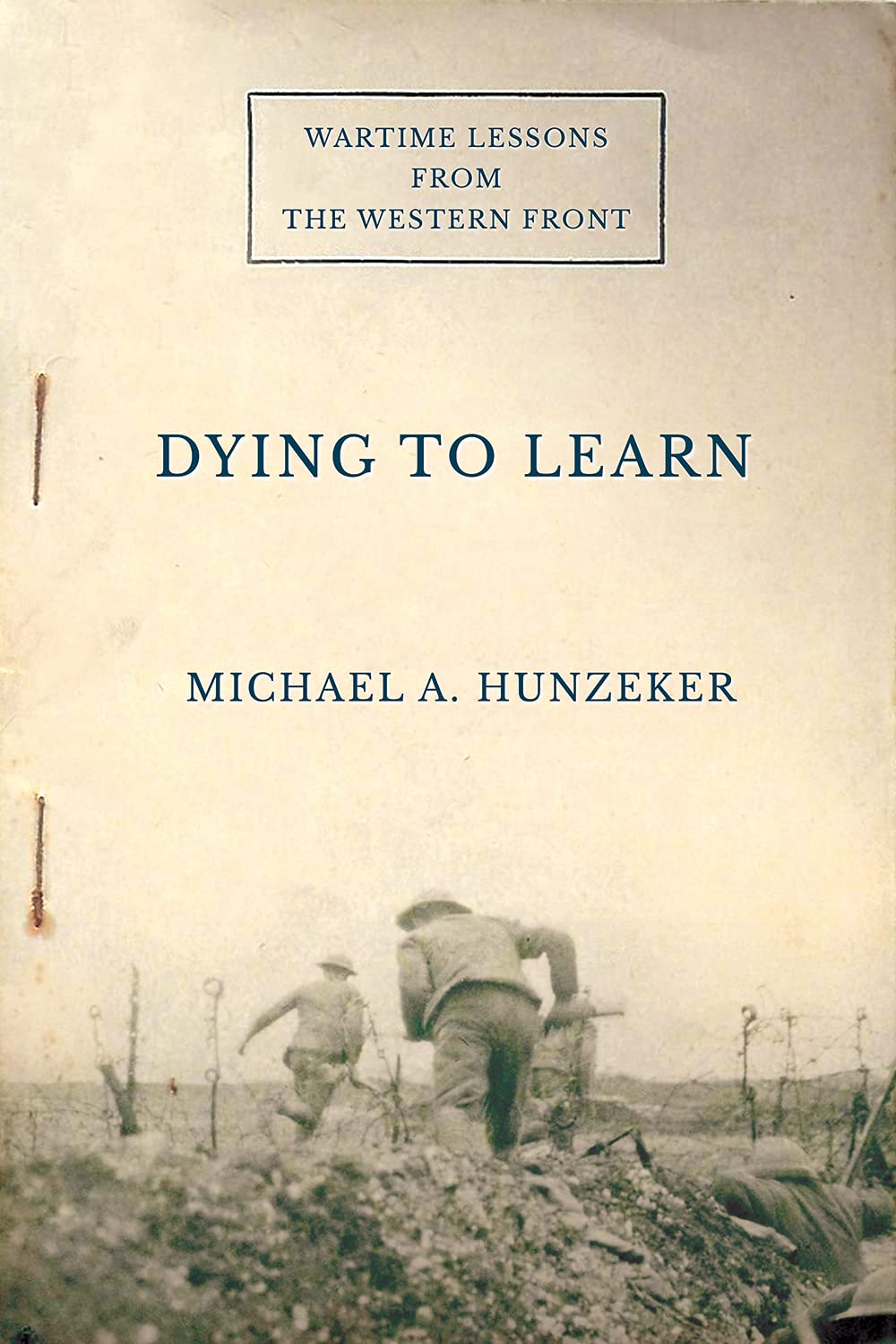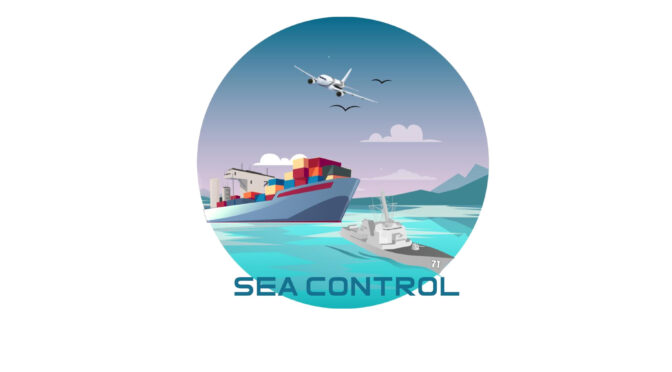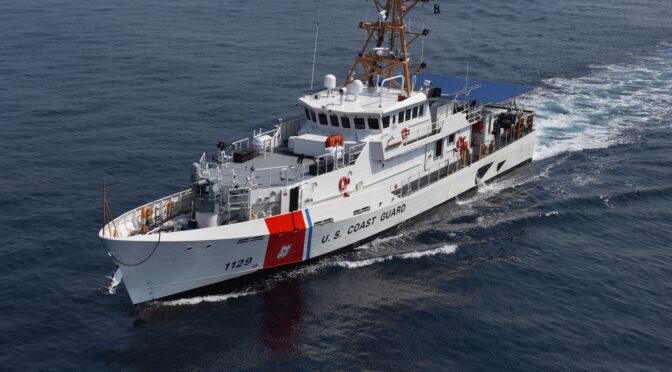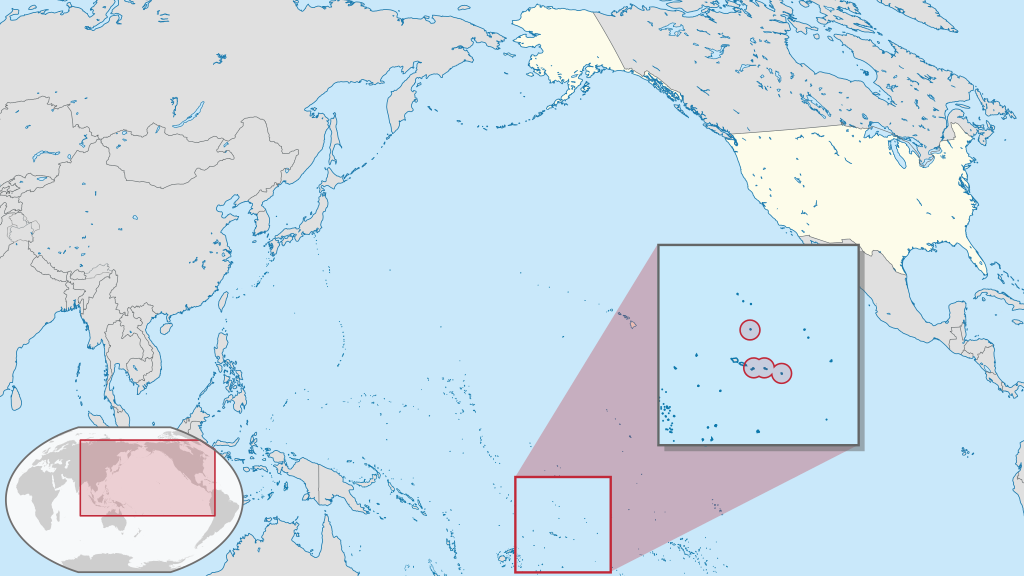By Dmitry Filipoff
As Michael Hunzeker aptly points out in his new book, “War is a classroom, but not all armies are ready to learn. In Dying to Learn: Wartime Lessons from the Western Front, Hunzeker investigates the wartime adaptation and force development of the armies of WWI. As armed forces entered great power conflict, their doctrine, tactics, and learning mechanisms were put to the ultimate test in a furious race to see who could first master new ways of war.
In this discussion, Hunzeker outlines how these armies improved their wartime learning, why the process was so challenging and bloody, and what the consequences are for militaries who don’t invest enough thought into how they will learn in war.
outlines how these armies improved their wartime learning, why the process was so challenging and bloody, and what the consequences are for militaries who don’t invest enough thought into how they will learn in war.
You structured your analysis with an assessment, command, and training framework. This was complemented by learning phases focused on exploration, selection, and action. You applied this framework to several militaries on the western front of WWI with respect to how they evolved their warfighting doctrines and force development functions. How would you describe the structure of your analysis and why did you decide on this structure?
I should start out by warning that I adopt an unapologetically social scientific approach to how I look at wartime learning. Some readers prefer historical narratives (heck, I’m one of them), yet I think it is an important distinction to make at the outset, in part so that potential readers know what they are getting themselves into. I want to be clear that I was deliberate about avoiding a more traditional, linear, storytelling approach.
The fact is that I did not think the world needed another history book that described the evolution of combat tactics on the Western Front. That task has already been more than capably handled by generations of superb scholarship by historians like Brian Bond, Timothy Lupfer, Bruce Gudmundsson, Paddy Griffith, Aimeé Fox, Jonathan Boff, Gary Sheffield, MA Ramsay, Williamson Murray, Michel Goya, and many others. I also had a different goal. I wanted to use a combination of theory and structured comparison so that I could get at the question of causation.
Historians have already shown us how British, French, and German tactics evolved over the course of the First World War, and that all three armies were engaged in an epic race to see who could master this new form of warfare first. But I wanted to know why it was that the German Army seemed to have learned faster than the others—and why it nevertheless still lost the war. As both a political scientist and a combat veteran of the Iraq war, I thought a rigorously tested answer to these questions might be useful for today’s military planners as they think about the learning challenge on tomorrow’s battlefields.
At the same time, I’ll be the first to admit that social science writing is a lot less “fun” to read than history writing. Reviewing existing work on wartime learning, adaptation, and innovation; theorizing about the generic learning process that all organizations must go through; generating a novel explanation to predict why some armies are better at learning than others—one that we can apply to more than just the First World War—and then systematically testing it against evidence drawn from the existing historiography is, well, abstract and dry. Red Storm Rising my book is not! At the same time, I feel like the rigor is worth the tradeoff. I provide readers with a transparent, detailed, and systematic analysis of both my theoretical predictions, and the evidence I draw from the historical record. As a result, I think I put them in the best position possible to judge my explanation for themselves. I’m also confident this approach is the best way to convince readers to take seriously the parallels between today and the period leading up to the First World War; and what the First World War can teach us about wartime learning in an all-out, no holds bar, great power conflict of the sort many of us worry is looming.
Many of the critical takeaways focused on how to best apply centralization, decentralization, and independence to core force development functions. Why were these traits so critical and what combinations proved most effective?
I’m glad you raise this point about the tradeoff between centralization and decentralization, because it is an important theme in the book. When reviewing explanations for organizational change early on in my research, I started to notice a disconnect between the way academic scholars and military practitioners talk about centralization and decentralization.
Practitioners in general—and American military officers in particular—seemed to instinctively treat decentralization as a good thing, especially when trying to foster change. The intuitive logic seemed to be that decentralization allows for independence, initiative, and debate. In contrast, the academics who studied military change tended to think about centralization and decentralization in terms of tradeoffs. In other words, scholars like Harvey Sapolsky and James Q. Wilson theorized that although decentralization supports autonomy, freedom, and creative problem solving, it also complicates implementation by empowering subordinates to resist changes with which they did not agree. Centralization, on the other hand, allows for faster implementation at broader scale and/or directional shifts, but it also stifles discussion, debate, and dissent, which is essential for generating new ideas and testing proposed changes to make sure they will actually work.
At the same time, academics also tended to take a rather simplistic—if not dim—view of military organizations. By this I mean a lot of existing research either automatically assumed that all military organizations were conservative, tradition bound, and backward looking; or placed the entire organization into a single, crude categorical box by treating a given military as either entirely centralized or entirely decentralized.
My theory of wartime learning tries to synthesize these views. I think scholars are right to point out that decentralization and centralization are neither purely ‘good’ nor entirely ‘bad.’ Instead, it is more useful to think of each approach as helpful when handling some types of tasks, but problematic when dealing with others. I also think practitioners are right to point out that modern militaries are diverse, complex organizations. Some resist change, while others embrace it. Moreover, because all militaries must juggle multiple competing tasks, including warfighting, logistics, training, maintenance, and intelligence, they have the ability to centralize control over how they perform some of these tasks at the same time they decentralize control over other ones.
As a result, my explanation for ideal wartime learning—which I refer to as Assessment, Command, and Training (ACT) theory—predicts that militaries that delegate moderate amounts of authority over command and control on the battlefield; maintain tight centralized control over training; and that possess a unit of rigorously trained analysts with access to the highest levels of command, but empowered to do independent analysis (i.e. take unfavorable positions); will learn faster than militaries that organize these tasks in any other way. I think my case study chapters on the evolution of the British, French, and German armies on the Western Front bear this prediction out. But of course, I try to present my evidence in the most transparent and systematic way possible so that readers can decide for themselves.
How well did pre-war doctrines and force development functions fare in the early years of the conflict? Why did some elements continue to persist despite the heavy losses?
It is important to distinguish between the war’s first few months, when maneuver was still possible on the Western Front, and later on when the front bogged down into a stalemate. As for that first period, the appalling casualties made clear that neither side went into the war with a doctrine that adequately prepared them for a full scale, great power clash with existential stakes. We of course have the benefit of a century of hindsight, but it is now rather obvious that no army was really ready for the ‘storm of steel’ that modern weapons created when employed at scale. No army spent enough time working on artillery-infantry coordination, or put enough effort into developing defensive tactics, or acquired enough heavy artillery. Some of this neglect was due to overarching political constraints (e.g. the British Army had to juggle multiple competing missions, including far-flung imperial policing) and strategic concepts (e.g. German and French war plans emphasized speed). Some of it was because hundreds of thousands of green troops were racing into action for the first time and ignored (or forgot) their training in the process. For example, infantry units on both sides tended to go into the assault without waiting for artillery support.
That said, it is important to remember that despite these many failings, it is not that the British, French, and German armies were unusually ignorant, lazy, or lackadaisical when it came to thinking about the future of warfare prior to 1914. Nor were they blissfully unaware of the technological innovations that were transforming the battlefield. The officer corps in all three armies recognized that firepower was changing the battlefield. They paid attention and tried to learn from the Second Boer War and the Russo-Japanese War. Officers in all three armies fiercely debated the best way to evolve in response. Some of the tactics and concepts tested (and sometimes even adopted) in the pre-war period even bore a striking resemblance to the tactics and concepts employed at the war’s end.
So the losses suffered early in the war were not the result of a lack of effort. Rather, both sides got the future ‘wrong’ to some degree. This point serves as an important reminder for us as we think about tomorrow’s wars. We can (and should) try as hard as we can to ensure our fighting forces go to war with the best doctrine, training, and associated equipment possible. Nevertheless, it is more likely than not that we will also get it wrong to some degree. And the distance between the doctrine our fighting forces have and the doctrine they will need will be measured in lives.
Which brings us to the point in the conflict when maneuver gave way to stalemate. All too often we think of 1915 and 1916 as the epitome of insanity, with generals on both sides callously wasting millions of lives as they hit repeat on the same bad ideas over and over again. But this standard narrative is misleading. Gary Sheffield is right when he points out that once deadlock set in, the two sides “did not simply gape at the trenches with incomprehension.” Instead, both sides almost immediately started to search for a solution. That solution was not immediately forthcoming—and took millions of lives to uncover—in part because of the intractable nature of the underlying problem (too many men in too small a space with too many bullets and not enough trucks and radios); and in part because the defenses evolved alongside the offensive concepts designed to penetrate them. Moreover, the fact is that no army gave enough thought to doctrinal learning before the war. It started out as a largely ad hoc process on both sides of the trench line, but the army that was first to develop a better way of learning was also the first to arrive at the right solution.
And that’s the entire point of my book: to argue that because we could very easily find ourselves in a situation similar to the ones our predecessors witnessed on the Western Front (as in our existing doctrines and concepts are inadequate in the face of the wartime challenge we actually face) it would be useful to have spent enough time thinking about how we are going to learn, and learn faster than the other side.
Combat training reform is a major emphasis of the analysis. How did combat training have to be organized to most effectively transmit lessons learned and new doctrines at scale? What combat training structures performed suboptimally and what were the consequences for tactics and operations at the front?
My theory predicts that the more a military centralizes control over training (which I define in terms of oversight, enforcement, and geography) the faster and more effective it will be at transmitting new practices across the relevant parts of the organization. In essence, centralization allows for consistency while also helping the organization overcome various forms of resistance and foot dragging by instructors and commanders who might disagree with a given new method or tactic (and in a large organization, someone always disagrees with change). In contrast, decentralized training—which can involve letting multiple schools or centers teach the same thing; or pushing responsibility for initial training onto frontline operational units—increases the odds that new ideas will be poorly taught (sort of how making a photocopy of a photocopy yields a hard-to-read document) or that instructors might choose to continue teaching old methods. In fact, at least theoretically speaking, my theory suggests it would be ideal to train the entire organization at one time and in one place! Since this approach is obviously impossible for a range of practical reasons, I simply predict that consolidating training sites and creating dedicated training commands is better than trying to perform training all over the place and/or delegating the task to operational units.
I find strong support for this prediction when I look at the relationship between learning and training in the British, French, and German armies. The German Army centralized training to a greater degree than its opponents before the war (although even the Germans delegated more authority over training than is the case in the U.S. military today). The German Army also sought to centralize its training programs even further as the war went on, which helped it disseminate its new assault, artillery coordination, and defensive concepts faster than was the case in the British and French armies. The British Army, which had a strong tradition of letting units handle their own training as a result of its longstanding colonial mission, did not fully centralize control over training until the middle of 1918. Meanwhile, the French Army never really made the transition, particularly among its infantry units. As a result, both organizations struggled with uniform implementation of new tactical concepts to a greater degree than was the case in the German Army.
Throughout the book, certain commanders-in-chief took a greater interest in these force development functions than others. Certain unit-level leaders were critical for frontline experimentation and capturing lessons learned in writing, which was sometimes read and disseminated by the highest levels of leadership. How would you describe the relationship between structure and individual leadership for the effectiveness of learning and adapting to warfighting?
I prioritize structure in Dying to Learn. Not because I think leaders are irrelevant or unimportant! Instead, I decided to focus on structure’s role, because I think it is a useful and important way to balance against our instinctive desire to always explain change in terms of individual leadership. The fact is that explanations that focus on individual leaders run into all sorts of problems. First, modern military organizations are massive and complex. No single leader can influence—let alone control—all of the various tasks that go into the wartime learning process. Second, in many cases, organizational learning transcends any single leader’s tenure. For example, although Eric Ludendorff often gets credit as the mastermind behind so-called storm troop tactics, the fact is that much of the important conceptual work behind this approach was accomplished under his oft-maligned predecessor, Erich von Falkenhayn. (And it is not like Falkenhayn was out on the battlefield personally directing the early experiments with storm troop units). Third, leaders are random. In other words, despite our best efforts, neither historians nor social scientists have a convincing, systematic way to explain why some leaders advocate for the “right” kinds of changes (e.g. Falkenhayn); while others resist change (e.g. Haig); while others advocate for the “wrong” kinds of change (e.g. Nivelle). Yet we know that some organizations seem to be systematically better at learning than others. Which means that an important part of the explanation has to lay somewhere other than on a given leader’s individual shoulders.
At the same time, I’m not trying to take leaders out of the story. Individual decisions mattered. Ludendorff clearly did not come up with storm troop tactics. Yet without his support the German Army would not have adopted them wholesale. Haig’s resistance to change made it harder for lower-level experiments within the British Army to gain wider traction earlier on in the conflict. My goal is to simply offer us a better and more systematic way of thinking about the relationship between leaders and structure when it comes to learning, and to pay a bit more attention to the variable that is harder to observe.
A recurring theme was that many of the highest-level commands were mostly overtaken by the demands of day-to-day operations to the detriment of analyzing doctrine and frontline lessons. Some critical force development functions floundered due to lack of high-level interest and access. How can warfighting organizations manage this challenge?
I’m glad you noticed this theme. In doing the research for Dying to Learn, it quickly became apparent that no one had a deliberate plan or mechanism for learning and adapting once the fighting started. Although I have no proof one way or another (likely because they did not think about it!), my guess is that all three armies took learning for granted and assumed that frontline units and high commands alike would instinctively adjust to wartime realities. This assumption seems rather akin to the wishful thinking that sometimes infects military planning. I worry we may not be in a much better position today.
We can and should invest in thinking about what the next war will look like, and in developing the sorts of concepts and weapons we will need to prevail in it. But we also need to invest time and energy into thinking about how we plan to learn under fire once the fighting starts and (in all likelihood) proves some of our assumptions, plans, doctrines, and capabilities wrong.
I don’t think I’m going out on a limb when I say that our learning process was not particularly agile in Iraq or Afghanistan. As one veteran aptly put it: our system for lessons learned should really be called a system for lessons collected and disseminated. And let’s be honest, many of the mechanisms essential to rapid and effective learning that I highlight in Dying to Learn are neither sexy nor glamorous. Today’s officers are not exactly clamoring to be assigned to training commands or doctrine writing staffs. Analytic career pathways are often a dead end. But if my research is on to anything, it suggests that these are precisely the sorts of personnel and capabilities we could wind up needing the most.
Michael A. Hunzeker (@MichaelHunzeker) is an associate professor at George Mason University’s Schar School of Policy and Government, where he is also associate director of the Center for Security Policy Studies. He served in the Marine Corps from 2000 to 2006.
Dmitry Filipoff is CIMSEC’s Director of Online Content. Contact him at [email protected].
Featured Image: British Vickers machine gun crew near Ovillers during the Battle of the Somme, July 1916. (Photo via Wikimedia Commons)






